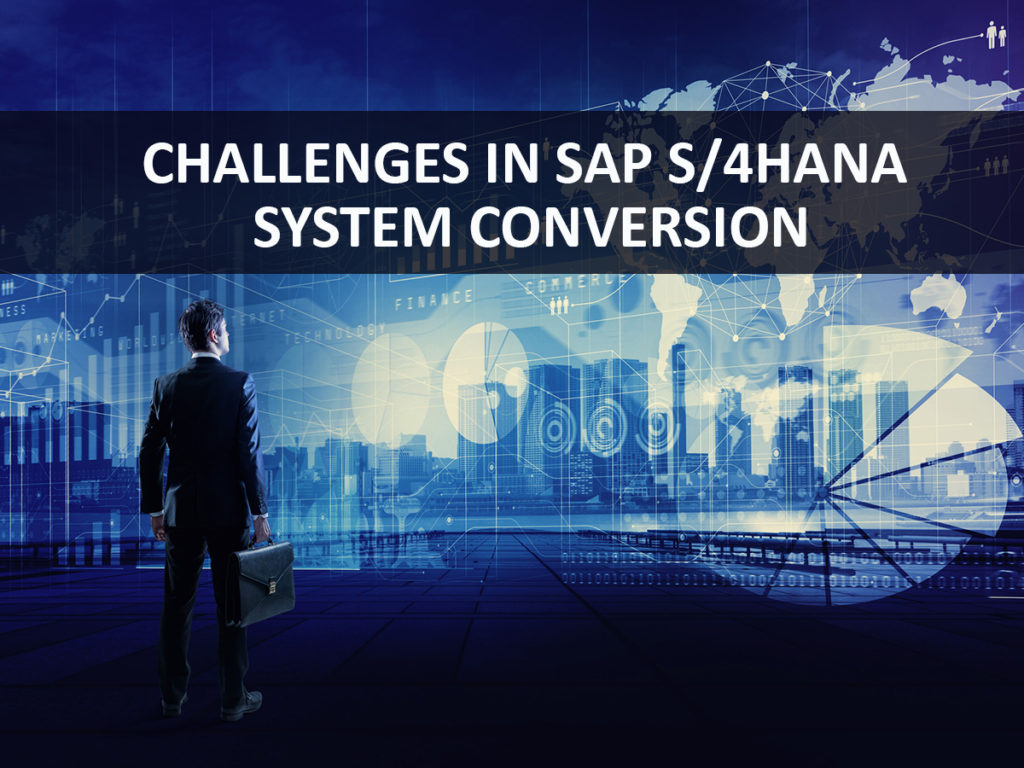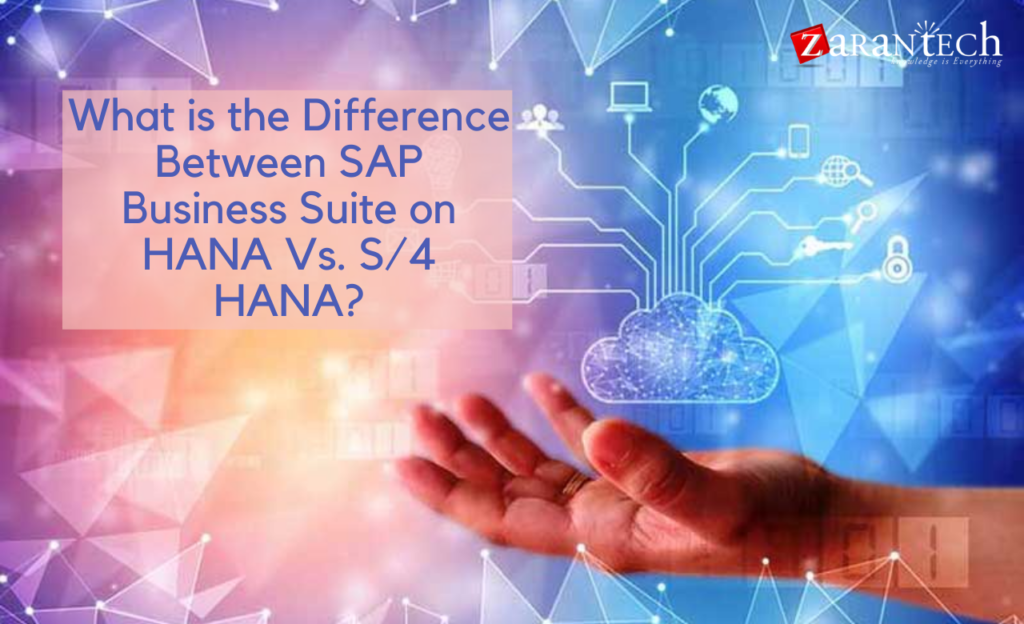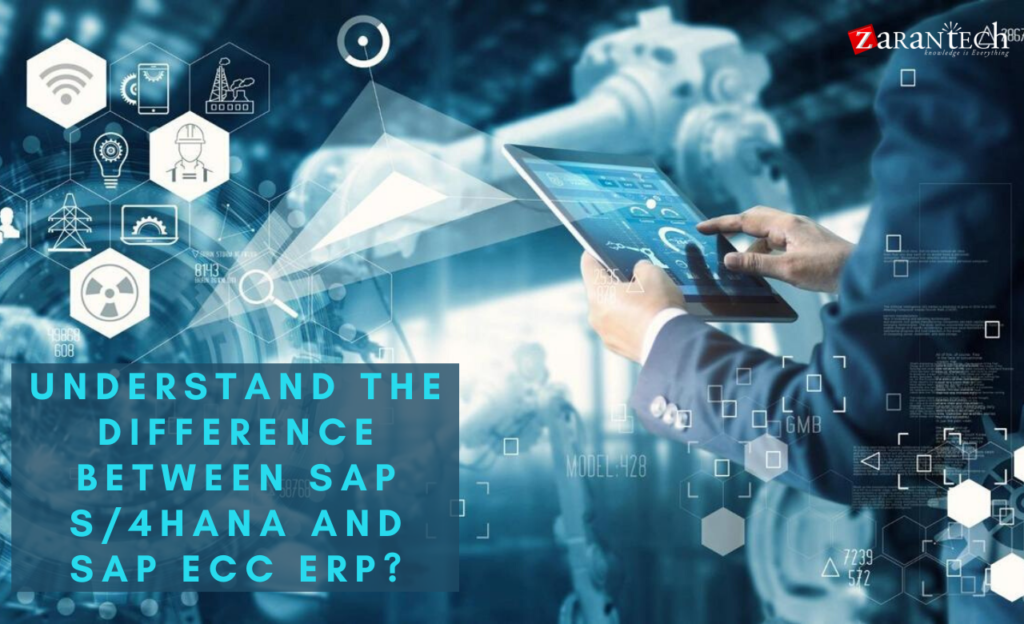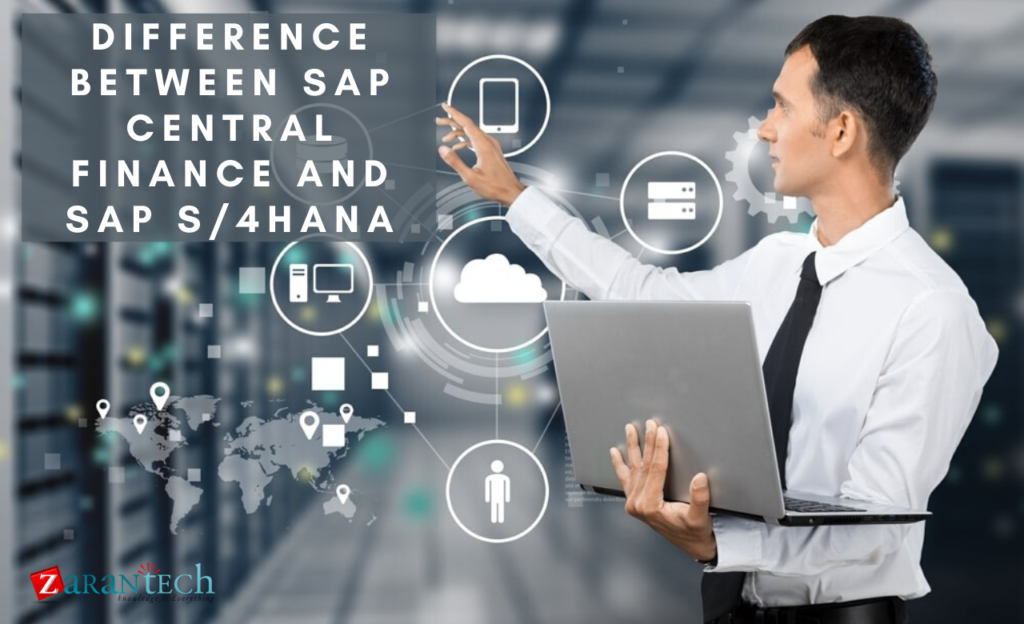Challenges in SAP S/4HANA System Conversion
Category: SAP S/4HANA, ZaranTech Training Posted:Aug 03, 2018 By: Ashley Morrison
The existing SAP customers are moving towards the adoption of SAP S/4HANA with the completion of regular maintenance for the SAP ERP 6.0 framework. It’s known to us that SAP S/4HANA primarily supports three options to perform the conversion, i.e., the new implementation, system conversion, and the landscape transformation. However, there are various standards to select between these options. In order to bring above the current system configurations, several enterprises are choosing the SAP S/4HANA system conversion method. The system conversion tactic involves the conversion of existing SAP ERP system to the SAP S/4HANA with the assistance of some tools, for example, the Software Update Manager and data migration program in Finance. This option has numerous benefits over the other options. It is a faster and less troublesome approach to make a transition towards the SAP S/4HANA. Though it is a practical approach, however, these days most of the organizations are facing a lot of challenges in SAP S/4HANA system conversion. In this article, some of the challenges faced by the organization are discussed.
Learn SAP S/4HANA Simple Finance from Industry Experts
SAP S/4HANA has come up with several innovative functionalities and advantages to the business. But still, most of the customers are not clear with the struggles needed to transform their current SAP ERP system to SPA S/4HANA. They have several queries running in their mind; like what it intends to transfer towards the SAP S/4HANA? What amount of time is taken by an SAP S/4HANA conversion project? What are the prerequisites of business and IT assets? How much will it go to cost? It is required to comprehend the hazardous areas of the project to generate a reasonable approximation. You might have heard that the transition to SAP S/4HANA is not only a technical enhancement, but it also includes the modification in the functionality and various business practices. As compared to the advancements, the complications of the errands in the functional areas are substantially more prominent. A considerable number of modifications have been done in the field of finance until now, as compared to the other functional modules such as sales and distribution, material management, etc. These areas do not require many struggles, and the modifications are mostly associated with the data model interpretation.
Let us now discuss the challenging areas during the transition from SAP ERP to SAP S/4HANA system conversion.
1. Business Partner approach:

The business partner approach is one of the transition area, all the clients who are experiencing the conversion will get influence from this. The business partner master is responsible for maintaining of clients and merchants in SAP S/4HANA because it is an only point of entry. The business partner is not an innovative idea it has been in use comparatively long time before the SAP S/4HANA launched into SAP Business Suite applications such as FSCM Credit and collect management, CRM, SRM or industry solutions.
The business partner can be considered as a chief master data object because it provides several benefits over the client and seller master records. It has few advantages such as the probability of a business partner to turn in several roles, for example, he can act as a seller and a client at a time and the likelihood to preserve several addresses and connection. It was impossible to become free from the client and seller master data model entirely because it was decided to go ahead with this particular approach as planned functionality. A lot of ERP applications are functioning with the traditional clients and seller tables as it is impossible to recreate the ERP application again to work with the business partner. To solve this issue, a system called CVI structure is utilized to coordinate data from the business partner into the client and seller data tables. When a shift is over to business partner it implies following for the SAP S/4HANA conversion project:
1. Restructuring of business processes associated with clients and sellers developments.
2. The amount of work requires to configure the new business partner object and the CVI structure to coordinate between the business partner and clients.
3. The amount of work requires to transfer data. It is necessary to clean the client and seller master data to duplicate the current clients and sellers into new business partner master data. These steps need to be carried out before the installation of SAP S/4HANA.
The business partner approach will also help to save a lot of time and effort if the enterprises have officially implemented any of the SAP Business Suite applications using this idea. In this scenario, almost all of the clients, sellers or both are now duplicating to business partners.
2. Financial Data Migration:

This is one of the challenging phases of the system conversion. At the time of ECC, you have performed enough checks and amended all the recognized inconsistencies. You are now able to install the SAP S/4HANA, executing the Software Update Manager and begin the financial data migration execution steps from the installation guide. However, it is required to run the transactional data consistency check, before the execution of the real migration table. Also, it is necessary to perform a consistency check after the completion of each migration step. There might be a possibility of getting an error message which was left undetected at the time of preliminary checks. Due to these errors, you may spend a huge amount of time (one month in place of one week) to find out the significance of these errors and resolving them. The free consistency checks in an SAP ERP system are unlike those important checks which are available after the SAP S/4HANA installation. These checks are more innovative and progressive, and able to catch those errors which are skipped by the standard set of checks in SAP ERP. If these errors are detected late in the project, it will result in the data inconsistencies.
Well, it is required to have the clean and clear data at the time of financial data migration. To confirm the accuracy of the relocated data, you should modify data and the execution of migration of transactional and master data. These actions should be carried out at the time of system downtime. Thus, this is the most challenging phase of system conversion to SAP S/4HANA.
3. Data Inconsistencies:
Well, the financial data migration is the crucial stage of any transition to SAP S/4HANA. In this phase, it is required to transfer the entire transactional data into the new data model. In order to transfer the data effectively, the current transactional data should be perfect and consistent, without any concern how you can accomplish the data integrity, in this case, the chances of error would be more. There are a couple of reasons that shows how an enterprise wind up with inconsistent transactional data.
- Due to the unreliable and conflicting updates. Specially developed programs and interfaces make these updates.
- Due to the small modification or variations in master data.
- The modifications are done to the standard tables directly, for instance with the help of a well-known function code.
Thus, if your organization has a massive size of data, a considerable measure of custom code may fail to resolve the data at the time of year-end closing procedure then you may have to face more issues with the inconsistent transactional data. The data cleansing is a costly procedure; thus it is very essential to recognize the problems associated with the data quality before the beginning of the SAP S/4HANA alteration project. Else, there might be a situation where it is required for you to spend a huge amount of time to identify and cleaning of inconsistent and unreliable data at the time of SAP S/4HANA conversion.
4. Changes in Functionality:

As compared to SAP ERP, a few essential modifications are done in the functional scope of SAP S/4HANA. For example, the applications like SAP Classic Cash and liquidity management is absent in SAP S/4HANA, they are substituted by the recently built SAP S/4HANA Cash Management. This application should be deployed and organize properly as it is a totally new application.
Substitute the other application such as SD Credit management with SAP Credit Management. It is required to organize and configure the applications to utilize the solution. Moreover, it is necessary to relocate old credit management, master data, and credit experiences. The new solutions should be utilized because there is no chance to use the legacy solution for credit management in SAP S/4HANA. It is anticipated to have some broad changes in functionality for those elements which are not being substituted with new applications in SAP S/4HANA. With the help of new asset accounting, you can perform, accounting for parallel evaluations in asset accounting. Well, it is essential to activate the new asset accounting in advance or as a piece of conversion of accounting to SAP S/4HANA. Also, it is required to make some technical prerequisite separately; this will produce possible results in the extra efforts and costs.
5. The new UI-SAP FIORI:
The new UI-SAP FIORI is the innovative user interface for SAP S/4HANA. This creative web-based FIORI UI itself is a radical modification. It is entirely different from the traditional SAP user interface because the entire concept has modified to role based. With the introduction of this new UI, some customers might raise the complaint about this new FIORI based UI as it might hinder their profitability. Moreover, the configuration of this FIORI user interface would be a long and complicated procedure, especially when an enterprise wants to adopt this UI totally. Therefore, most of the enterprises have selected the phased method where there is a limitation of FIORI application with conversion to SAP S/4HANA.
Learn SAP S/4HANA Simple Finance from Industry Experts
Conclusion:
These are the challenges and difficulties in the SAP S/4HANA system conversion faced by most of the organizations. With an appropriate plan and arrangements, it is possible to perform the system conversion to SAP S/4HANA smoothly.





 99999999 (Toll Free)
99999999 (Toll Free)  +91 9999999
+91 9999999